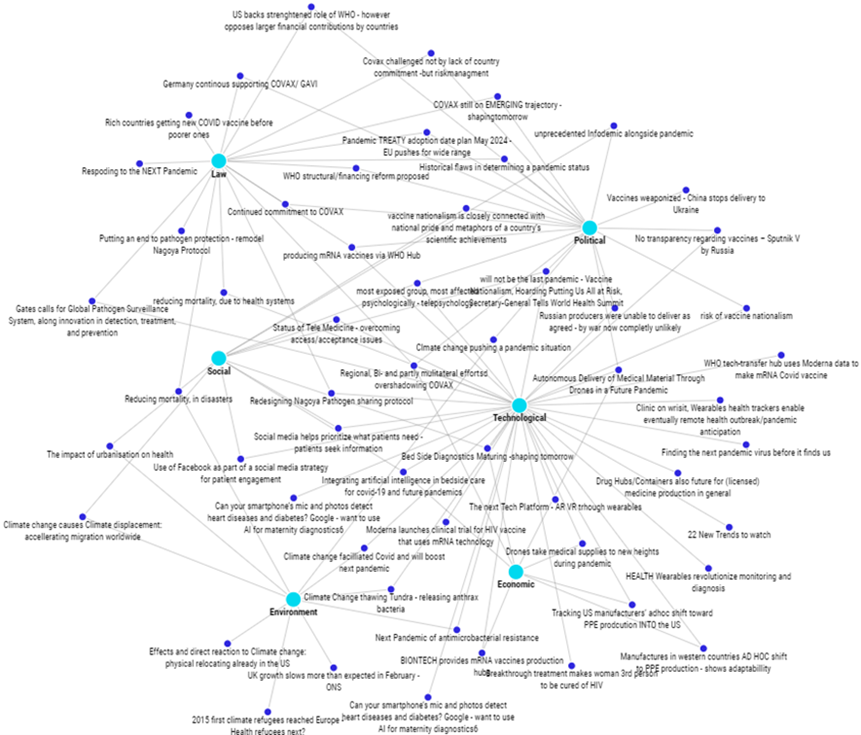Supported by the PIP Framework Partnership Contribution, in 2022, WHO initiated a project to estimate medical countermeasures (MCMs) needed during a future influenza pandemic.
Effective planning for the deployment of pandemic influenza response products including vaccines, antivirals and diagnostics is critical to ensuring the timely delivery of these interventions to populations in need. Fundamental to this is implementing an evidence-based understanding of global product needs in order to inform allocation and prioritization strategies.
Using horizon scanning techniques and foresight methodology, this analysis looked at:
- Potential scenarios and the issues that would impact global population needs for MCMs;
- Emerging considerations for the global access, allocation and deployment of pandemic influenza products, and;
- Potential MCM needs related to public health goals.
This work ultimately aims to support Member States with planning for national influenza vaccine deployment plans.
Considering a realistic future scenario
During the course of the project, interviews with subject-matter experts were conducted, together with desk research and consultative workshops. Through this process, WHO identified a number of public health goals and objectives through which the response to a future influenza pandemic would be monitored against.
Complementing this was the mapping of interconnected factors that would enable or hinder the achievement of public health goals by Member States, WHO, and partners. These emerging factors were categorized into political, economic, social, technological, legal, and environmental (PESTLE) domains. Two workshops were conducted with the aim of bringing all of these considerations together into plausible future-looking scenarios through which the implications of these scenarios on MCM preparedness were discussed.

Visualisation of emerging trends found in the literature (including grey literature) in a node network using the PESTLE framework
Quantifying future needs
Considering the public health goals and the driving factors (and scenarios) affecting them, several opportunities and threats that may affect the ability to enhance access, allocation and deployment practices were identified – including but not limited to the development of new production facilities, technological advancements in health care provision, and more stakeholders getting involved in deployment activities. These will be reflected in the guidance materials that WHO and partners will produce (e.g. guidance and related supporting materials on developing and implementing a National Deployment and Vaccination Plan, and operational frameworks for global access, allocation and deployment and related tools). WHO will use these considerations to work with Member States and advance the understanding of potential needs based on different scenarios and assumptions. These would provide further direction to identify key preparedness areas of investment and enable flexibility during future responses, by having an already identified range of potential operational approaches.






